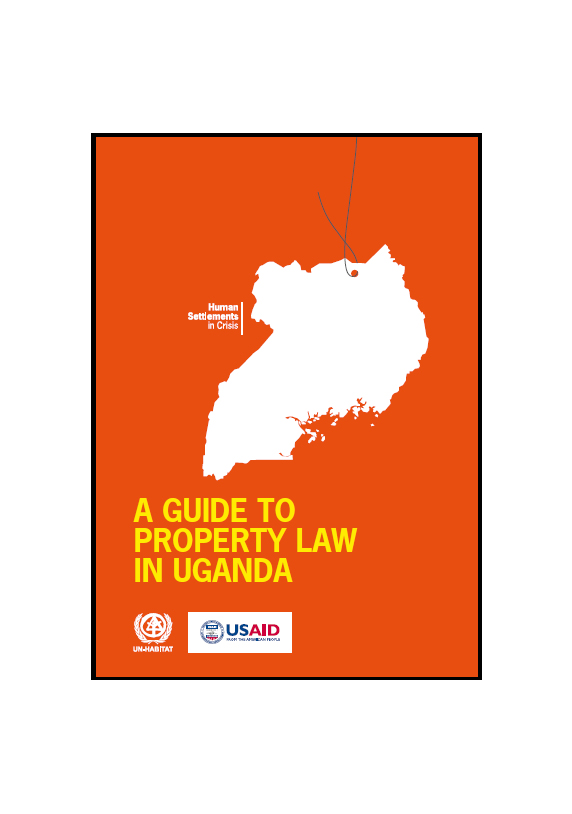Resource information
The designations employed and the presentation of the material in this publication do not imply
the expression of any opinion whatsoever on the part of the Secretariat of the United Nations
concerning the legal status of any country, territory, city or area, or of its authorities, or concerning
delimitation of its frontiers or boundaries, or regarding its economic system or degree of
development. The analysis, conclusions and recommendations of this publication do not necessarily
reflect the views of the United Nations Human Settlements Programme, the Governing
Council of the United Nations Human Settlements Programme, or its Member States.
This guide has been written as an information resource for government officials, community leaders, humanitarian aid workers, judges, lawyers and others whose responsibilities include upholding land and property rights in Uganda. It outlines the main provisions of Uganda’s constitutional and legal framework and the protection these provide to property rights. It briefly outlines the historical background to existing land tenure relations, describes the constitutional provisions relating to land in the 1995 Constitution and sets out the main provisions of the Land Act 1998. Many important principles related to land law in Uganda pre-date the current constitutional and legal framework. Some derive from concepts developed under English property law and many of the cases discussed below were heard by the courts while Uganda was still under colonial rule. It also explains some of the terms and concepts which under-pin the existing system of land rights in Ugandan law. Although the formal system for administrating land tenure, carrying out transactions and settling disputes in Uganda is quite clear, the practice is less so. Lack of resources has made it difficult to implement some of the main provisions that the laws envisage and the official institutions suffer from a serious lack of capacity, which has increased the role and significance of customary law in filling the resulting vacuum. This guide provides a brief introduction to how customary law in Uganda deals with land rights in the Acholi region of Northern Uganda. It includes a brief overview of the context in which Acholi ethnicity has developed and how this has given rise to certain beliefs and ways of approaching land rights and settling disputes. Finally, the guide describes the protection given to land, housing and property rights under international law, which, while not directly applicable, forms an important framework within which the courts should operate. It provides practical guidance on how international human rights monitoring bodies can be used to draw attention to particular violations of land, housing and property rights.


